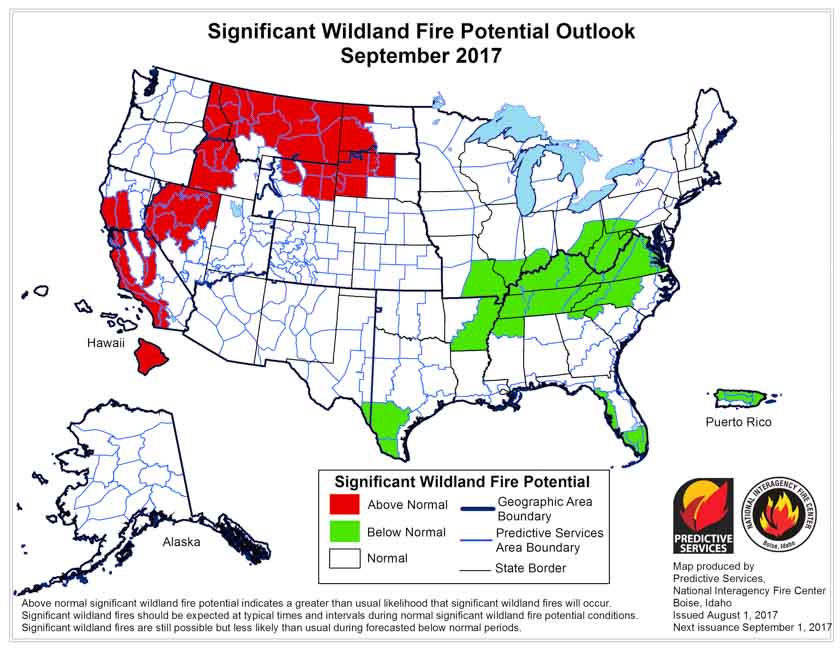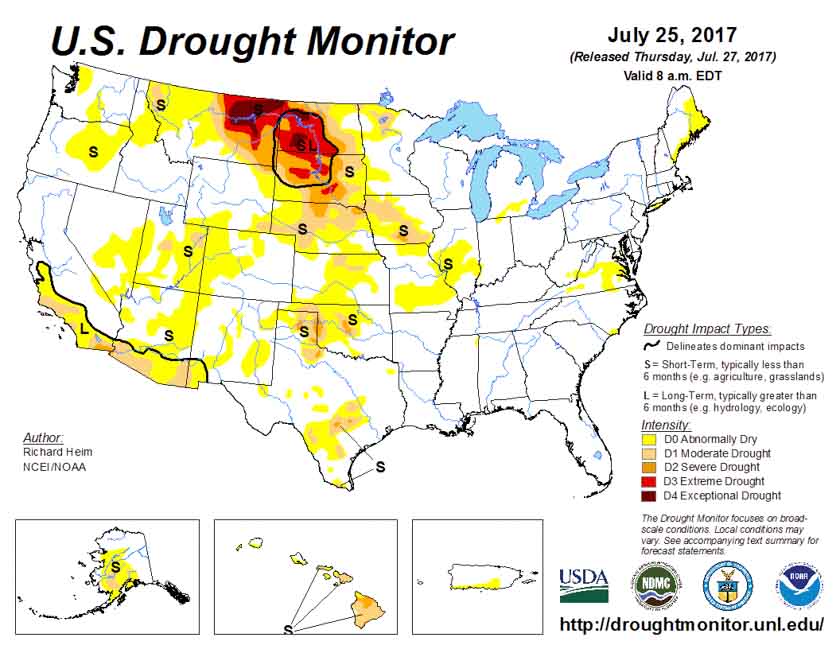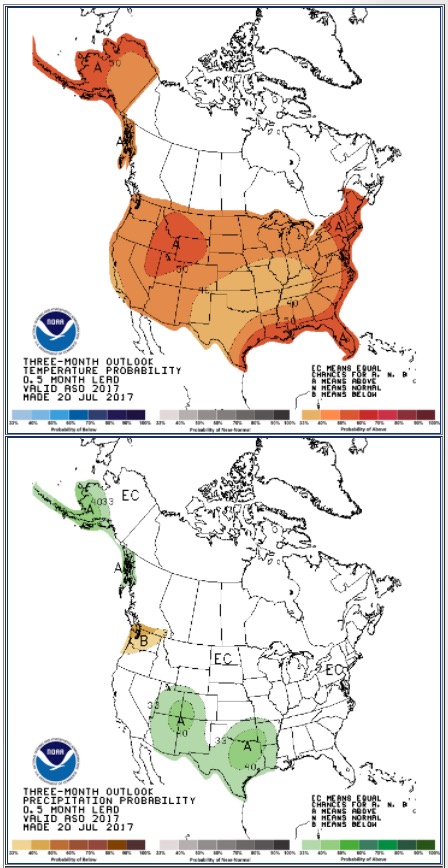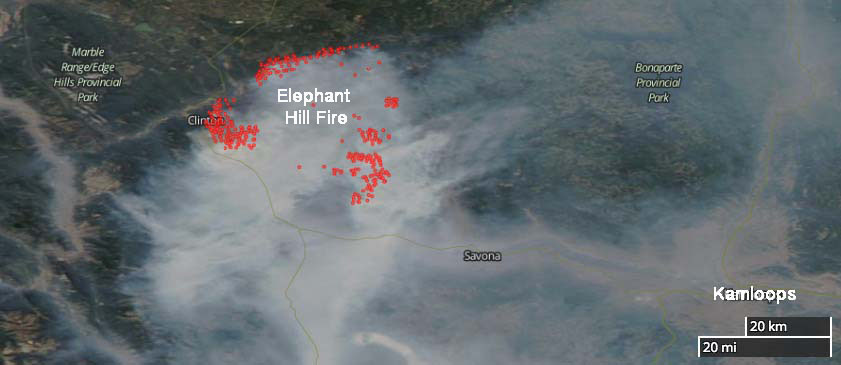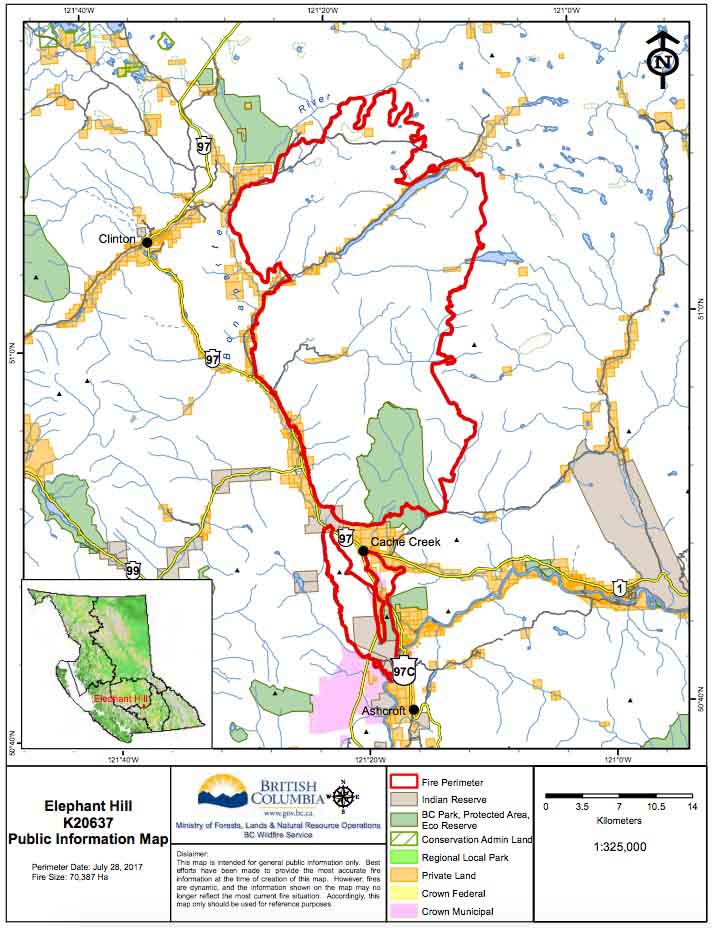Above: The Cove Fire in northeast California. Uncredited and undated; posted to Inciweb August 2, 2017.
(Originally published at 12:25 p.m. PDT August 2, 2017)
One of the fires in the Modoc July Complex of fires on the Modoc National Forest in northeast California was extremely active Tuesday and Tuesday night. The Cove Fire, now three miles northwest of Adin, population 272, spread two to four miles to the southwest and one mile southeast, doubling in size. It added another 10,000 acres to bring the size to about 22,000 acres. All of the fires in the Complex combined have burned a total of 73,465 acres.
The Cove Fire became plume dominated Tuesday and by evening had generated cloud-to-cloud lightning and increased winds as a result of the intense heat buildup and atmospheric conditions. Extreme fire behavior in the form of fire whirls and spotting caused the fire to further advance southwest towards a prepared dozer line near County Roads 90 and 87. Resources were immediately deployed to connect the dozer line around the fire’s southwestern edge and protect structures. They utilized tactical firing to reinforce and create a buffer inside the dozer line.
The additional growth moved into lighter fuels which should offer less resistance to control.
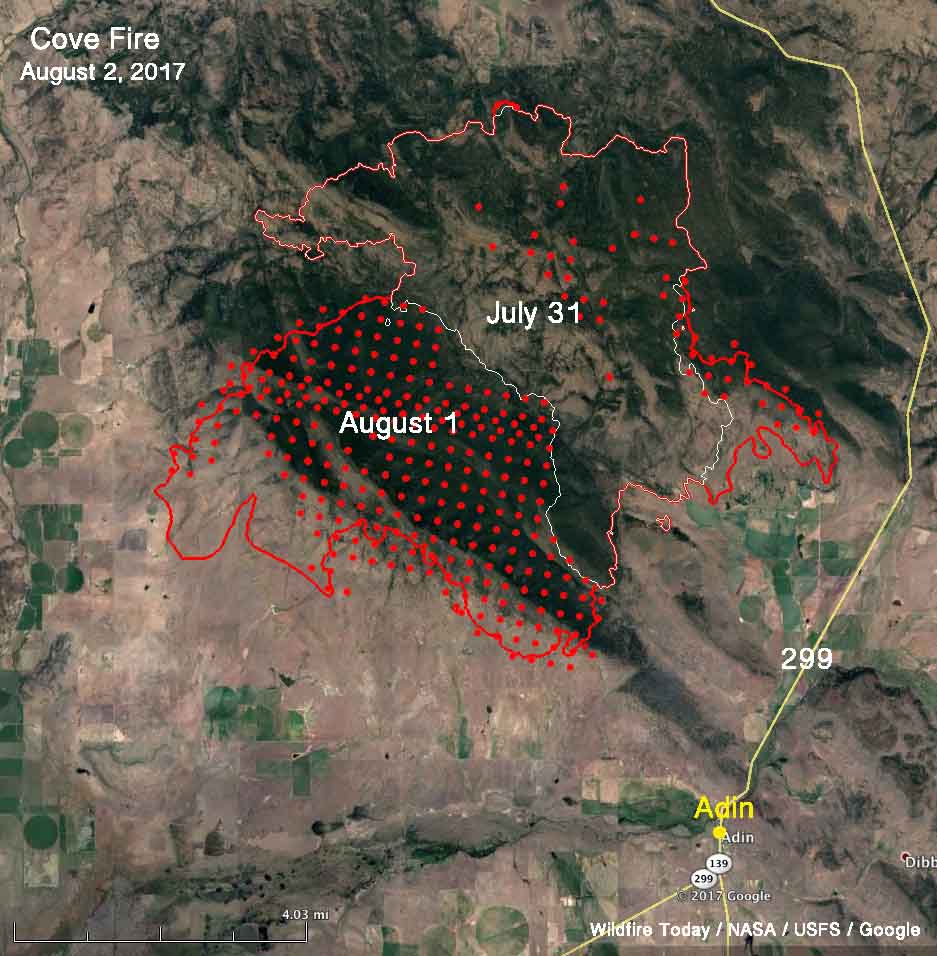
Another fire in the Complex, the Steele Fire east of Clear Lake, was active but remained within the constructed fireline around the northeast corner of the fire. Crews put in handline along the east side to tie two dozer lines together and Wednesday will be working on fireline along the entire eastern edge.
All of the articles about the Modoc July Complex of fires can be found here, with the most recent at the top.





